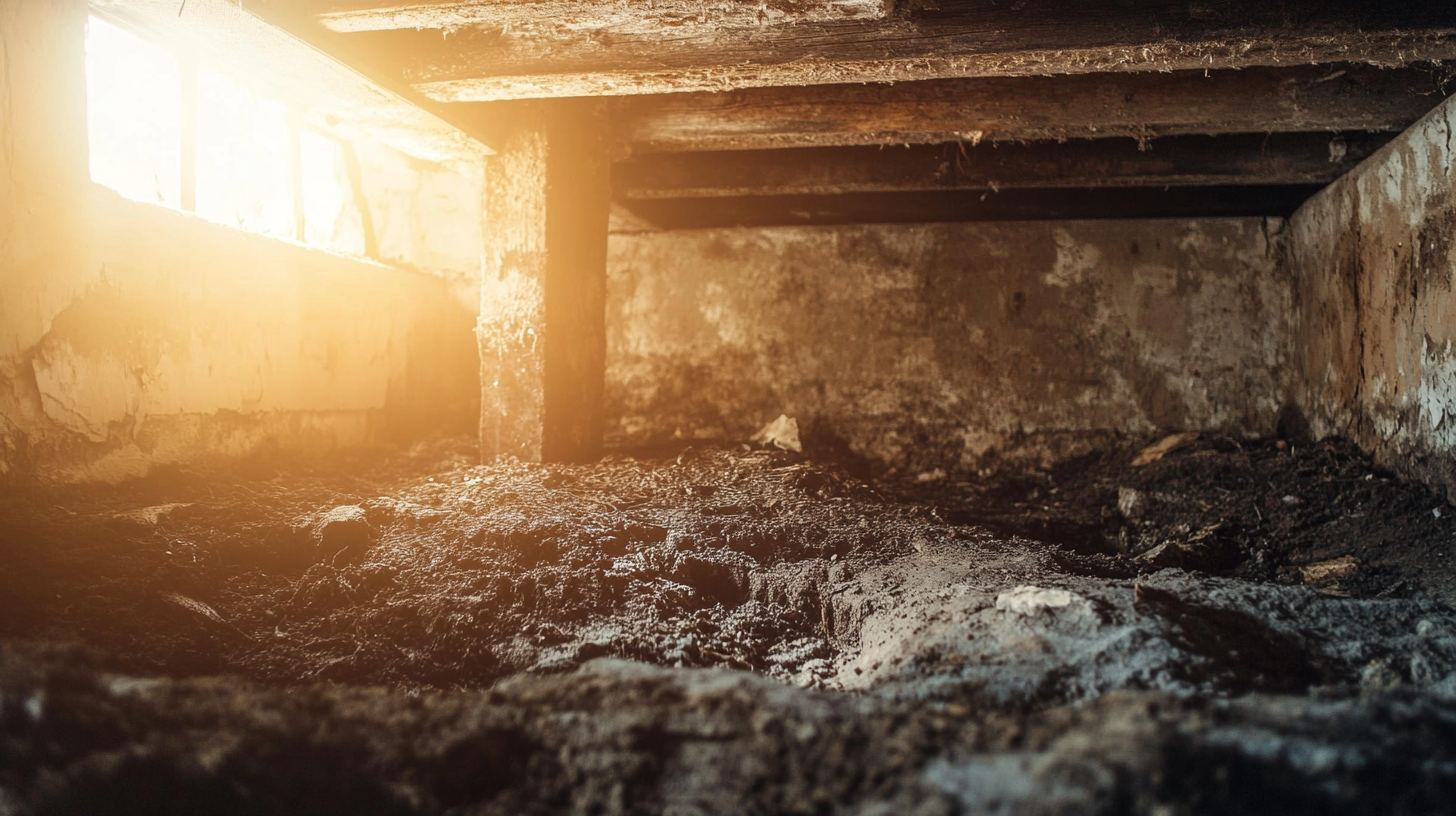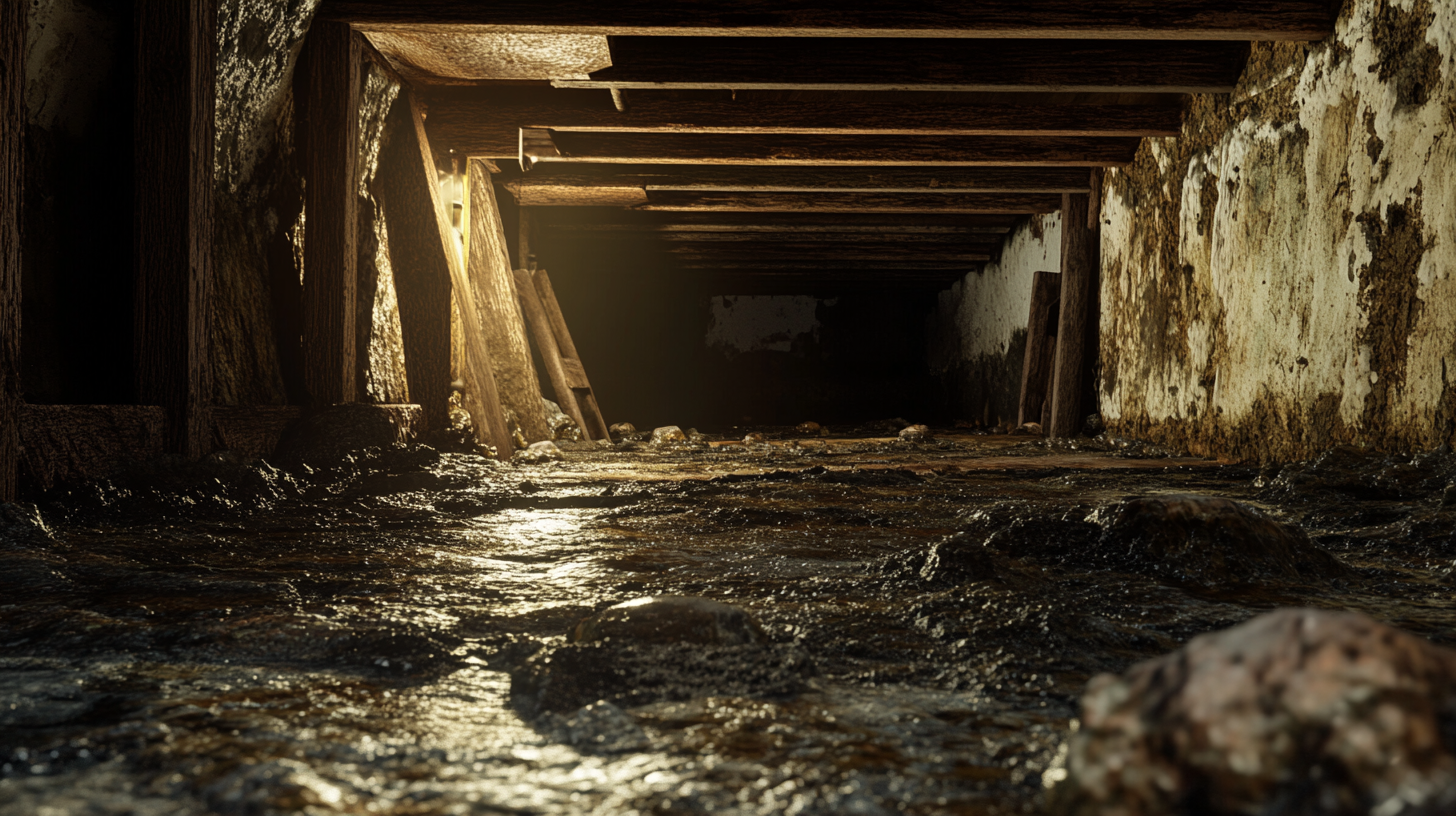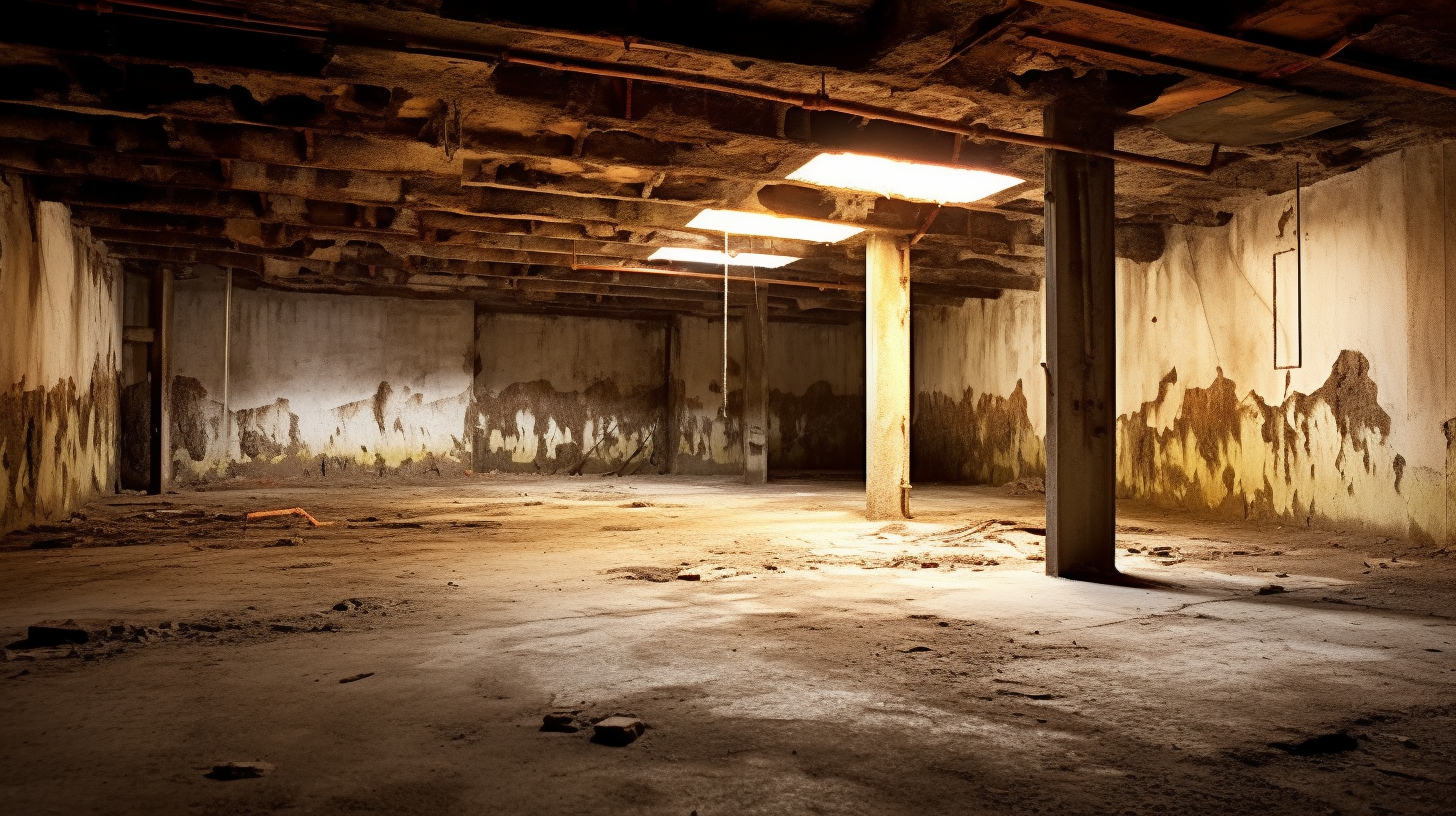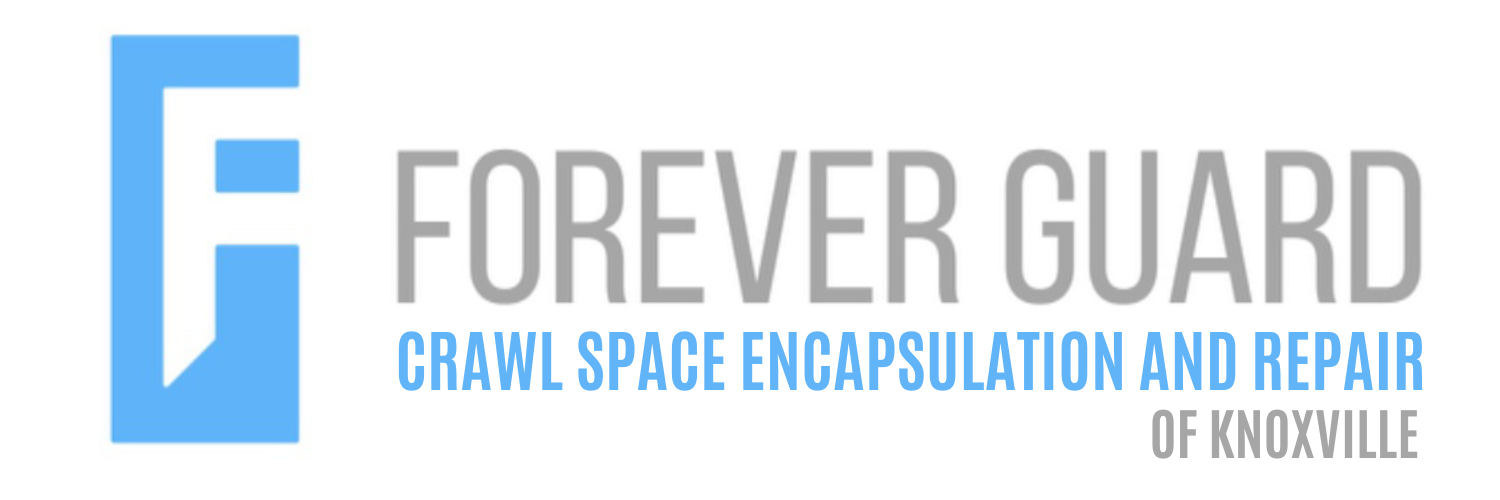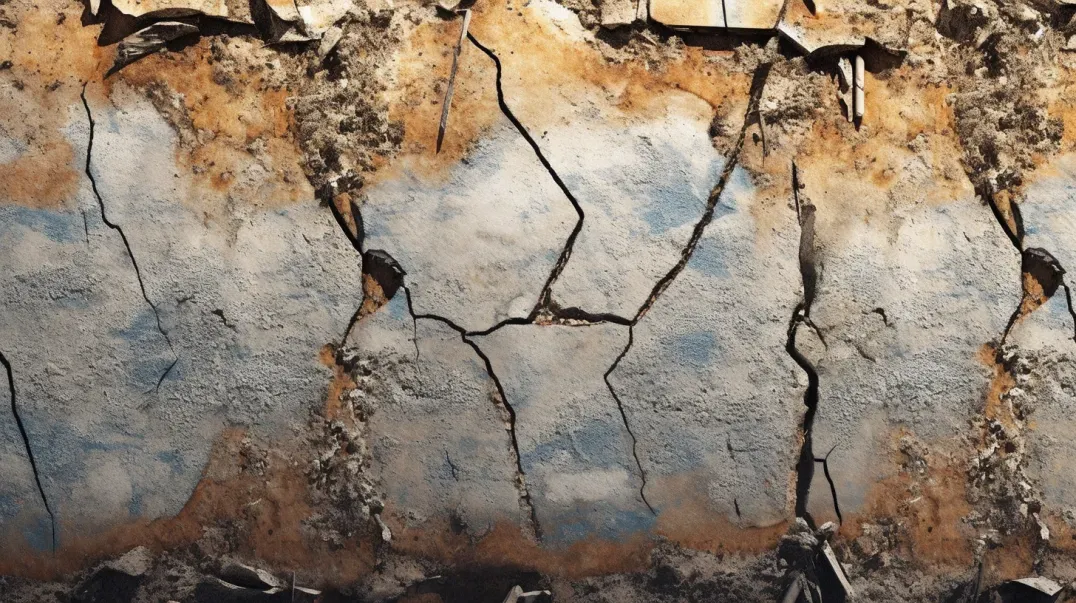Now IS THe Time To...

Crawl Space Services In Knoxville, TN
Stetson Howard: 865-432-6743
CRAWL SPACE ENCAPSULATION, REPAIR, WATERPROOFING & MOLD REMOVAL
No-Obligation, Free Inspections
No-Obligation Free Estimates
We Warranty All of Our Work
100% Satisfaction Guaranteed
At the core of every enduring building lies a fundamental element that is often unseen yet crucial—its foundation. A strong and stable foundation doesn’t just support a building; it safeguards the future of everything that rests upon it. This blog post delves into the importance of maintaining a robust foundation, highlighting how it contributes to both the longevity and safety of any structure. From residential homes to towering skyscrapers, the integrity of a foundation directly influences the building's resilience against natural forces and everyday stresses. We'll explore the consequences of neglecting this critical aspect and provide insights into effective maintenance strategies that ensure a building can withstand the test of time and challenges. Understanding this foundational element of construction is essential for anyone looking to protect their investment and ensure safety from the ground up.
Understanding Foundation Cracks
Foundation cracks can be unsettling, signaling potential problems below a building's surface that, if ignored, can lead to serious structural issues. This section delves into the common causes of these cracks and explains the differences between their types, helping homeowners and builders recognize and address potential problems early.
Common Causes of Foundation Cracks
A variety of factors can contribute to the development of cracks in a foundation. Understanding these causes can help in effectively managing and preventing further damage:
- Natural Soil Movement Due to Seasonal Changes and Moisture Levels: Soil expands when wet and contracts when dry, and this cyclical movement can exert uneven pressure on the foundation. Seasonal changes can significantly influence moisture levels in the soil, leading to shifts that cause cracks.
- Poor Construction Practices and Inadequate Site Preparation: A foundation's strength starts with proper site preparation. Cutting corners during construction—like improperly compacted soil or inadequate waterproofing—can leave a foundation vulnerable to cracking as it settles or reacts to environmental stresses.
- Excessive Loads and Pressure from Structural Weight and Environmental Factors: Foundations are designed to support a specific amount of weight. Overloading a building, or pressure from environmental factors such as tree roots or nearby construction, can exceed what the foundation was engineered to handle, leading to cracks.
Types of Foundation Cracks
Recognizing the type of crack can provide insights into its seriousness and the urgency of needed repairs:
- Non-Structural Cracks: These cracks are usually not a threat to the structural integrity of the building. They are often thin, vertical, and do not widen over time. Common in new construction as the building settles or in older buildings experiencing minor settling, these cracks are primarily cosmetic and can be easily sealed to prevent water intrusion.
- Structural Cracks: These cracks are more serious and may indicate significant foundation movement or stress. They are typically wider than 1/4 inch, can be horizontal, vertical, or diagonal, and often accompanied by other signs of structural distress such as sticking doors or sloping floors. Structural cracks may widen over time and require professional assessment and repair to restore the integrity of the foundation.
- Common Crack Patterns and Their Indications: Understanding crack patterns can also provide clues about underlying issues. For example, stair-step cracks in masonry joints often indicate differential settling, while horizontal cracks might suggest lateral pressure from soil or water.
By recognizing the causes and types of foundation cracks, property owners can better assess the severity of the issue and take appropriate action, whether it’s a simple sealant application or a professional structural repair. This knowledge is crucial in maintaining the safety and longevity of any structure.
Soil Management
Effective soil management is crucial for maintaining the health and stability of your home's foundation. Two key aspects of this are proper soil grading and soil stabilization techniques. By addressing these areas, homeowners can significantly mitigate potential foundation issues, ensuring long-term structural integrity.
Proper Soil Grading
Proper soil grading around your property is essential to ensure that water drains away from the foundation, preventing a myriad of problems associated with water infiltration such as erosion, swelling, and eventual cracking.
- Importance of Proper Grading: Effective grading helps avoid water pooling around the foundation, which can lead to hydrostatic pressure and structural damage. Keeping water away from the foundation is crucial, especially in areas prone to heavy rains or flooding.
- Recommended Slope and Landscaping Tips: The ideal slope for effective drainage is generally a decline of at least six inches within the first ten feet away from the foundation. This gradient helps direct water flow away from the structure, reducing the risk of water damage. When landscaping, consider using plants that require less watering near the foundation, and utilize gutters and downspouts to control roof runoff. Strategic placement of rain gardens or drainage swales can also be beneficial in managing excess water.
Soil Stabilization Techniques
Stabilizing soil, particularly expansive clay soils which are prone to significant volume changes with moisture fluctuations, is critical in preventing foundation distress.
- Methods to Stabilize Expansive Clay Soils: These soils can pose significant challenges due to their tendency to swell when wet and shrink when dry, exerting uneven pressures on the foundation. Techniques such as deep watering programs during dry periods can help maintain consistent soil moisture levels and reduce the risk of soil movement. Additionally, ensuring proper drainage can prevent excessive soil expansion during wet conditions.
- Use of Soil Amendments and Chemical Treatments: Amending the soil with organic materials can help improve its structure, reducing susceptibility to swelling and shrinking. For more severe issues, chemical treatments such as the injection of soil stabilizers (e.g., lime or cement) can be used to increase soil strength and reduce permeability, thus providing a more stable base for the foundation.
Through careful soil grading and stabilization, homeowners can effectively manage the risks associated with soil-related foundation problems. These practices not only protect the foundation but also contribute to the overall sustainability and safety of the property.
Water Management
Effective water management is crucial for protecting the structural integrity of any building. By implementing robust drainage solutions and moisture control strategies, homeowners can prevent water-related damage to their foundations, which is one of the leading causes of foundation issues.
Effective Drainage Solutions
Proper drainage systems are essential to managing water flow around a building's foundation, helping to prevent erosion and mitigate the risk of water damage.
- Installation of French Drains, Sump Pumps, and Other Drainage Systems: French drains are installed around the perimeter of the foundation to redirect water away from the structure. Sump pumps are used especially in basements where water pooling occurs; they pump water out of the basement and away from the home. Both systems are effective in keeping the area dry and should be considered based on the specific needs of the property.
- Guidelines for Maintaining Gutters and Downspouts: Gutters and downspouts play a critical role in managing roof runoff. Ensure they are clean and free from debris to function effectively. The downspouts should extend several feet away from the foundation to prevent water from pooling around the base of the building. Regular maintenance checks, especially after heavy rainfall, are essential to ensure they are operating correctly.
Moisture Control Strategies
Keeping the foundation dry isn't just about handling external water; it also involves protecting the foundation from moisture from all sources.
- Strategies to Keep the Foundation Dry Through Waterproofing Measures: Applying waterproof sealants or installing waterproof membranes are common strategies to prevent moisture from penetrating the foundation. These barriers not only protect against external moisture but also help in reducing the dampness caused by ground moisture, providing a dry and stable foundation.
- Importance of Routine Checks for Water Leaks and Moisture Accumulation: Regular inspections for leaks in plumbing, cracks in the foundation, and other potential sources of moisture are crucial. Early detection and repair of these issues can prevent minor problems from becoming major ones, safeguarding the foundation's integrity.
Implementing these water management techniques will help maintain a healthy foundation, thus extending the life of the structure and improving its overall safety and functionality.
Construction and Building Design
A building's longevity and safety are heavily influenced by foundational choices made during the construction phase. Selecting the appropriate foundation type and considering the load it must bear are critical decisions that determine the structural integrity of the entire building. This section explores how to make these crucial choices effectively.
Choosing the Right Foundation Type
The foundation of a building plays a pivotal role in its stability and durability. Here’s how to choose the right foundation type:
- Factors to Consider When Selecting the Foundation Type: The choice of foundation should be primarily based on the soil type and climate. Soils vary in their ability to bear weight, drain water, and resist movement. For instance, areas with expansive clays may require a deeper, more robust foundation to handle soil shifts, whereas sandy soils might need a foundation that can prevent erosion. Additionally, climates that experience extreme weather, such as heavy rains or freeze-thaw cycles, necessitate foundations designed to withstand these conditions.
- Benefits of Using Reinforced Foundation Designs: Reinforced foundations, typically incorporating steel bars or mesh within concrete, offer enhanced durability and resistance against cracking. This reinforcement helps distribute loads evenly and manage the tension and stresses that could lead to structural failure, making them particularly beneficial in areas prone to earthquakes or heavy traffic vibrations.
Building Load Considerations
Ensuring the building design properly accommodates weight distribution and structural stress is crucial for foundation health.
- How to Ensure the Building’s Design Does Not Impose Excessive Stress on the Foundation: It’s important to consider the total load of the building, including the weight of the structure itself, its contents, and transient loads like those from wind or snow. The foundation should be designed to distribute these loads evenly without overloading any single point. This includes proper layout of the building components and potentially integrating load-bearing walls or columns in a strategic manner.
- Advice on Consulting with Structural Engineers During New Constructions or Renovations: For new constructions or significant renovations, consulting with a structural engineer is essential. These professionals can provide invaluable insights into the soil characteristics, recommend suitable foundation types, and ensure that the building plans meet all required structural standards and codes. They can also help in retrofitting existing buildings to improve their structural integrity, ensuring that any additions or changes won’t compromise the existing foundation.
Properly addressing these aspects of construction and design not only enhances a building’s safety and functionality but also significantly extends its lifespan by preventing foundational problems before they arise.
Regular Foundation Inspections
Regular foundation inspections are crucial for maintaining the structural integrity of your home. They not only help in identifying potential problems early but also save considerable costs in long-term repairs. This section provides insights into setting up a professional inspection schedule and offers practical tips for homeowners to conduct their own inspections effectively.
Professional Inspection Schedule
Professional foundation inspections are a preventive measure that every homeowner should consider to ensure their home remains safe and sound.
- Recommended Frequency for Professional Foundation Inspections: It is generally recommended to have your foundation professionally inspected every three to five years. However, this frequency might need to increase if your home is older, located in an area prone to extreme weather conditions, or built on expansive clay soil which is susceptible to significant changes.
- What to Expect During These Checks: During a professional inspection, an expert will assess both the interior and exterior of your home for signs of foundation distress. This includes checking for cracks in walls and floors, doors and windows that do not close properly, and any signs of soil movement around the home. The inspector will also examine drainage systems and landscaping to ensure water is properly diverted away from the foundation.
- Early Detection Benefits: Catching minor issues, such as small cracks or early signs of water damage, can prevent them from developing into major repairs. Early intervention can save thousands in repair costs and also prevent damage to the interior and structural components of your home.
DIY Inspection Tips
In between professional inspections, homeowners can conduct their own checks to monitor the condition of their foundation.
Simple Ways for Homeowners to Conduct Regular Visual Inspections: Walk around your home regularly and inspect the foundation for any new or expanding cracks. Check for signs of water pooling near the foundation and ensure that gutters and downspouts are functioning properly to direct water away from the house.
Key Signs of Potential Foundation Issues to Look Out For: Some warning signs include:
- Cracks in exterior or interior walls, especially those that are widening or appear suddenly.
- Doors or windows sticking or failing to close, which can indicate shifting of the foundation.
- Gaps between wall seams or where walls and ceilings meet.
- Sloping floors or stairs, which can suggest a settling or shifting foundation.
By integrating these professional and DIY inspection strategies into your home maintenance routine, you can help ensure the longevity and safety of your foundation, ultimately protecting your investment and ensuring peace of mind.
FAQs
Recent Blog Posts
Crawl Space News
